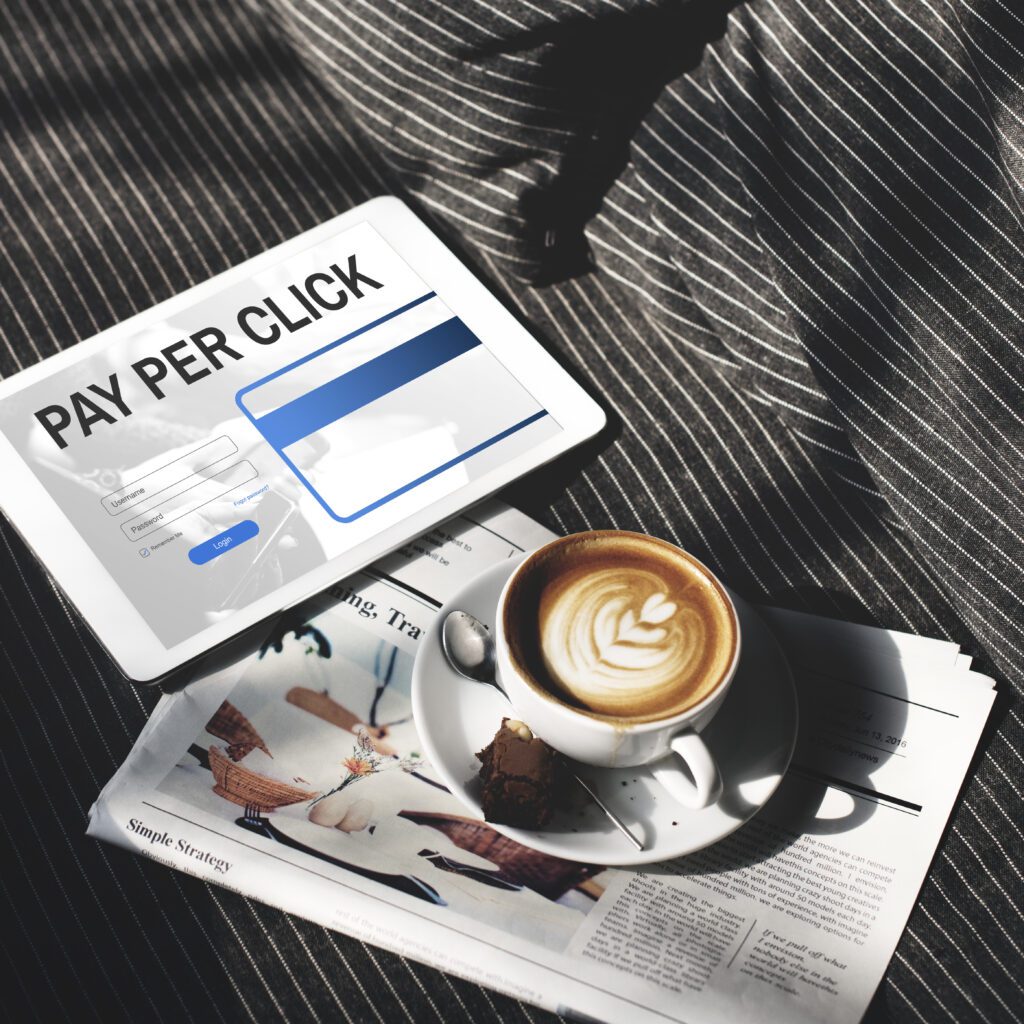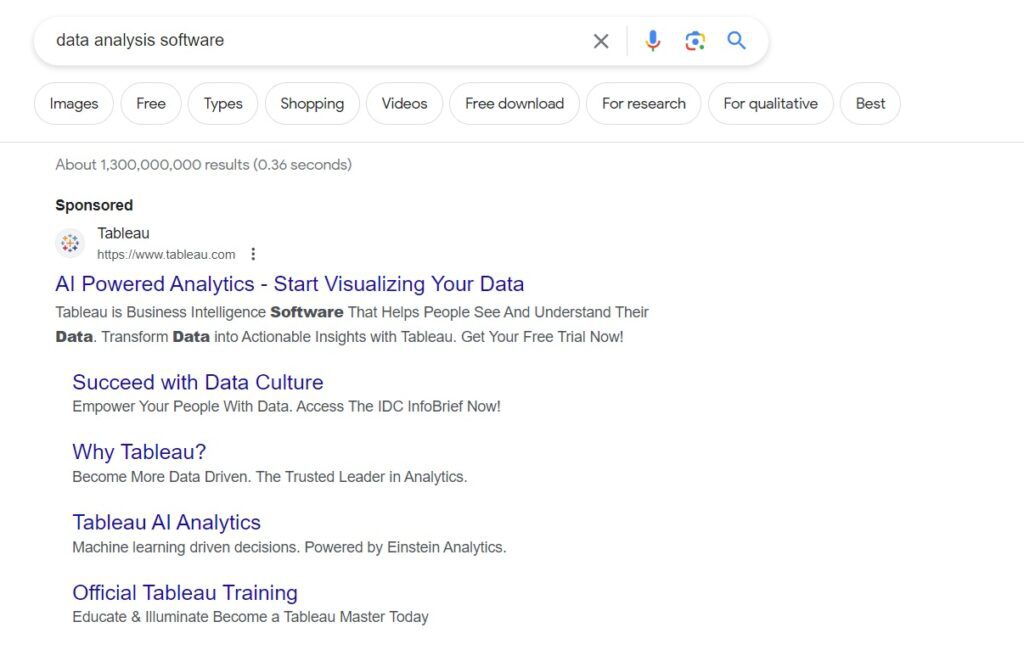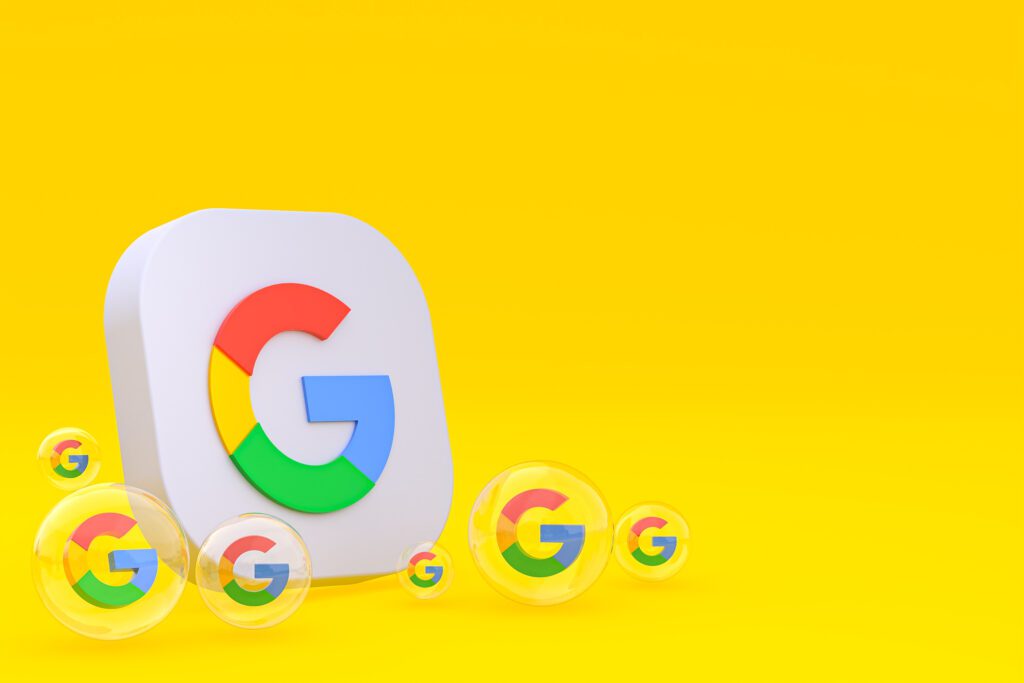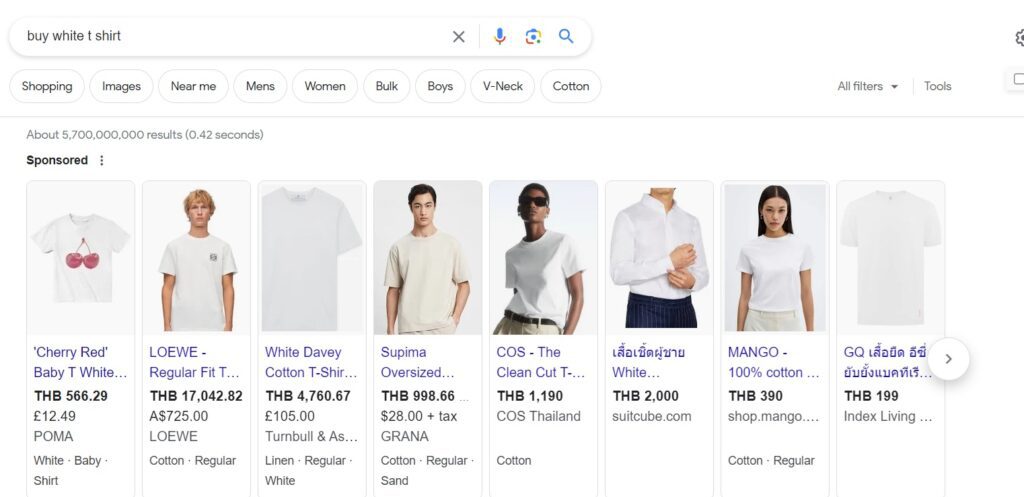Are you curious about what PPC really means, how much you can earn per click, or how to craft an effective campaign? Dive into our comprehensive guide to understand the ins and outs of PPC advertising, and how it can be a game-changer for your business in Thailand.
PPC (Pay-Per-Click) advertising is a dynamic and essential component of digital marketing. PPC stands for a model where advertisers pay a fee each time one of their ads is clicked. It’s a way of buying visits to your site, rather than attempting to “earn” those visits organically.
In PPC advertising, the goal is to ensure the click’s value surpasses its cost. For instance, if you pay $1 for a click that directs a customer to your site, and they end up subscribing to a service that earns you $100 monthly, the small cost of the click is overshadowed by the substantial long-term gain.
Understanding PPC: The Basics
PPC advertising, far more than just a method for buying ad space, is a strategic tool for directing targeted traffic to your website. In Thailand’s competitive digital market, mastering PPC is vital. It involves not only selecting the right keywords and creating compelling ads but also embracing diverse ad formats including text, images, and increasingly popular video content.
PPC ads can be strategically placed across various platforms, from search engines to social media and other websites, ensuring a broad and effective reach to your target audience in the most engaging formats.

PPC Auction and Bidding System
The core of PPC advertising lies in understanding its auction and bidding system, particularly within Google Ads. This system is the backbone of how your ads are displayed and how much you pay for them.
In PPC bidding, advertisers select keywords and place bids for ad placement on search engines like Google. Consider an advertiser focusing on “data analysis software.” They choose this keyword to ensure their ad appears when users search for related terms.
Google evaluates the ad using a Quality Score, ranging from 1 to 10, based on the ad’s relevance to the keyword, the expected click-through rate (CTR), and the quality of the landing page. The Ad Rank, which determines the ad’s position, is then calculated by multiplying the Quality Score by the maximum bid – the most the advertiser is willing to pay per click.
For instance, if the maximum bid for “data analysis software” is $5, and the ad receives a Quality Score of 6, the calculation would be:
- Keyword: Data Analysis Software
- Maximum Bid: $5
- Quality Score: 6 (based on ad relevance, CTR, and landing page quality)
- Ad Rank Calculation: $5 (Max Bid) x 6 (Quality Score) = 30

An example of how the Sponsored Ad looks like for keyword:”Data Analysis Software”.
Understanding Google Ads’ Platform Structure
Begin by gaining a deep understanding of Google Ads’ interface. Familiarize yourself with the dashboard, the various campaign types, and the ad group structure. It’s also crucial to understand the role of “Search Partners” and “Partner Sites” within the platform. These partners extend the reach of your campaigns beyond Google Search, offering opportunities to display your ads on a network of related sites, thus amplifying your visibility.

Understanding the Auction System
Every time a search query is entered, Google Ads runs an auction. This auction determines which ads will appear for that specific query and in what order. Your participation in this auction is automatic once you’ve set up a campaign and chosen your keywords.
Cost-Per-Click (CPC)
CPC is the amount you pay each time a user clicks on your ad. It’s not a fixed rate but varies depending on the competition for the keywords you’re targeting and your ad’s quality score. A higher quality score can lead to a lower CPC, making your campaigns more cost-effective.
Bidding Strategies
Google Ads offers various bidding strategies tailored to your advertising goals. For instance, ‘Maximize Clicks’ is an automated strategy ideal for driving traffic, while ‘Target CPA (Cost Per Acquisition)’ focuses on converting users at a specific cost. Choosing the right strategy hinges on your campaign objectives and market understanding.
Quality Score and Its Impact
Quality Score is a metric that evaluates the quality and relevance of your keywords and ads. It influences your ad’s position and your CPC. A high Quality Score is achieved through relevant ad copy, effective landing pages, and a high click-through rate (CTR).

Advanced Campaign Strategies
As you delve deeper into the world of PPC, embracing advanced strategies becomes essential for campaign optimization. These strategies include geo-targeting, ad scheduling, and the utilization of ad extensions, all of which can significantly enhance the effectiveness of your PPC campaigns.
Geo-Targeting
Maximize ad impact in Thailand by combining Geo-Targeting with structured campaigns. Tailor ads to specific geographic locations for relevance, and organize campaigns by product line, audience, or region.
Concentrate on creating small, focused ad groups within each campaign, using targeted keywords. This strategy boosts your click-through rate (CTR) and Quality Score by enabling more precise ad text and landing pages. Learn more about optimizing your account structure for better relevance and performance.
For expert help, contact SEO Thailand today.
Campaign Creation and Structure Optimization
Develop a campaign structure that mirrors your business goals. Separate campaigns by product line, target audience, or geographical location, especially if you’re targeting the Thai market.

Ad Scheduling
Optimize the timing of your ads. Ad scheduling, or dayparting, involves showing your ads on specific days or hours, aligning them with the most active times for your target audience.
Using Ad Extensions
Ad extensions expand your advertisement with additional information, such as contact details, links to specific parts of your website, or even product pricing. These extensions increase the visibility and effectiveness of your ads, leading to higher click-through rates.
Utilizing Analytics for Informed Decisions
Use Google Analytics alongside Google Ads to gain deeper insights into user behavior. Analyze metrics like bounce rate, session duration, and conversion paths to refine your PPC strategies.

Setting Up Your First PPC Campaign
Google Ads, a cornerstone of PPC advertising, operates on a sophisticated auction system. This system is a blend of advanced ad concepts, where the winning ads are determined not just by bid amounts but also by the relevance and quality of the ad and its landing page.
The ‘Quality Score‘ in Google Ads, encompassing click-through rates, keyword relevance, and the performance history of your account, plays a pivotal role. Mastering this system demands an in-depth understanding of advanced analytics tools, continuous A/B testing, and strategic keyword bidding.
Effective PPC in Google Ads is less about expenditure and more about intelligent investment. Optimization here is nuanced, involving meticulous analysis and expert recommendations to achieve a high ROI. Leveraging these aspects ensures that your ad not only reaches your audience but also resonates with them, making every click a potential conversion.
Setting up a PPC campaign involves several steps:
Keyword Research
Maximize your PPC success in Thailand with targeted keyword research. Identify high-volume, low-competition terms your audience searches for, including long-tail keywords for cost-effective campaigns. Use tools like Google Keyword Planner for this crucial step. For expert assistance, contact SEO Thailand to refine your keyword strategy.

Aligning Keywords with User Intent
Match search intent, refine keywords, build impactful campaigns: Tailor keywords to user goals (informational, navigational, transactional) for relevant ad groups within themed campaigns.
Ongoing Keyword Optimization
PPC is dynamic. Regularly review and adjust your keyword strategy based on performance data. Monitor changes in search trends and competitor strategies, especially in the evolving Thai digital market.
| Key Takeaway | Description |
|---|---|
| Relevance | Your ad must match your keywords and the intent of your searcher. |
| Clarity | Ensure your ad message is clear and compelling. |
| Call to Action | Encourage click-throughs with strong CTAs. |
Setting a Budget
Budgeting in PPC is crucial. It involves understanding the cost-per-click (CPC) and how it varies with competition and keyword popularity. Effective cost management means setting realistic budgets and adjusting bids to optimize ad spend.
Different Ad Formats and Platforms
Expanding beyond traditional text and image ads, PPC now encompasses a variety of formats that cater to diverse audiences across multiple platforms.
Video Ads: Engaging and visually compelling, video ads are increasingly popular, especially on platforms like YouTube and social media.

Responsive Ads: These ads automatically adjust their size and format to fit available ad spaces,making them versatile across devices and platforms.
Shopping Ads: Ideal for e-commerce, these ads display product images and prices directly in search results, providing a direct link to your product pages.

An example of shopping ads for keyword: “buy white t shirt”.
Performance Across Platforms
Social Media
Platforms like Facebook and Instagram offer targeted advertising options, allowing you to reach specific demographics with tailored content.
Search Engines
Traditional PPC ads on platforms like Google are fundamental, relying heavily on matching keywords to the searcher’s intent. For instance, if a business bids on the keyword “online fitness courses,” their ad might appear in the sponsored section of the search engine results when someone searches for that term or something similar, like “home workout programs.” This targeted approach connects ads directly with users’ active search queries.
Partner Websites
Display ads on Google’s partner sites can increase your reach, placing your ads in front of users while they browse other websites. Ensure these are creative and eye-catching.
- Vivid visuals: Ditch the text-heavy approach and let stunning images or eye-catching animations do the talking. Showcase your product in action, highlight its benefits through captivating visuals, or evoke emotions with relatable scenes.
- Clever messaging: Keep it concise, impactful, and relevant to the context. A witty tagline or a thought-provoking question can spark interest and encourage clicks.
- Strategic targeting: Not all placements are created equal. Use Google’s targeting options to ensure your ads appear on websites and apps frequented by your ideal audience.
PPC Optimization and Testing
Continuous optimization and testing are crucial for the success and improvement of your PPC campaigns. This involves a cyclical process of analyzing data, implementing changes, and measuring the impact.
Ongoing Campaign Optimization
Regularly review and adjust your campaigns based on performance data. This includes tweaking your bids, refining your ad copy, and optimizing your landing pages to improve conversion rates.

Importance of A/B Testing
Implement A/B testing for your ad copies and landing pages. By testing different versions of your ads and landing pages, you can determine which elements resonate best with your audience and lead to higher conversion rates.
Data-Driven Campaign Refinement
Utilize data analytics to guide your optimization efforts. Analyze metrics like click-through rates, conversion rates, and cost per conversion to identify areas for improvement and to inform your future campaign strategies.
| Effective Management of PPC Campaigns | Description |
|---|---|
| Regular Monitoring and Analysis | Constantly monitor campaigns using Google Ads analytics. Track metrics like click-through rates, conversion rates, ROI and cost-per-conversion. |
| Iterative A/B Testing | Implement A/B testing for ad copy, landing pages, and CTAs to identify the most effective elements and enhance performance. |
| Budget and Bid Management | Adjust bids based on performance and market trends. Regularly review to ensure they align with campaign goals. |
| Ad Copy and Landing Page Optimization | Continuously optimize ad copy and landing pages for relevance and user experience, ensuring alignment with the engaging ad copy. |
| Integration with Analytics and Conversion Tracking | Integrate with tools like Google Analytics for insights and implement conversion tracking to measure campaign effectiveness. |
| Performance Analysis | Regularly analyze campaign data to refine targeting, bidding, and ad creative for improved performance and ROI. |
Frequent PPC Pitfalls and How to Avoid Them
In PPC advertising, common pitfalls can hinder campaign success. Awareness of these mistakes and knowledge on how to avoid them are crucial for beginners and even seasoned advertisers.
Mistake 1: Neglecting Keyword
Avoid the trap of bidding on broad or irrelevant keywords. Focus on relevance to your product or service to ensure better quality traffic.
Mistake 2: Ignoring Negative
Enhance your campaign’s targeting and efficiency by using negative keywords. This approach prevents ads from showing up in irrelevant searches and includes non-converting terms to improve relevancy and reduce unnecessary expenditure.
Mistake 3: Underestimating the Importance of Landing Page Optimization
Ads hook, landing pages convert. Infuse your pages with relevant, persuasive content aligned with user intent (informational, navigational, transactional). Craft targeted CTAs for each search query, guiding users effortlessly towards action.
Continuously refine these pages, ensuring they specifically cater to individual queries to boost conversion rates, rather than directing all traffic to one generic page.
Future Trends in PPC Advertising
Staying ahead in PPC requires an understanding of its evolving landscape. Let’s look at some emerging trends that are shaping the future of PPC advertising.
Trend 1: Automation and Machine Learning
The integration of automation and machine learning in PPC allows for more efficient campaign management, from bid adjustments to audience targeting. This technology is revolutionizing how advertisers optimize their campaigns.

Trend 2: AI-Driven Ad Targeting
Artificial intelligence is becoming increasingly pivotal in ad targeting. AI algorithms can analyze large datasets to predict user behavior and preferences, allowing for more precise ad targeting.
Trend 3: The Evolving Digital Landscape
The digital advertising world is continuously evolving, with new platforms and ad formats emerging. Staying adaptable and informed is key to leveraging these changes for successful PPC campaigns.
Key Takeaways
| Getting Started with PPC in Thailand | Details |
|---|---|
| Establish Clear Goals | Define your objectives, like increasing website traffic, generating leads, or boosting sales in the Thai market. |
| Start with a Small Budget | Begin with a modest budget for risk management and learning the PPC dynamics. |
| Focus on Learning and Adaptation | Invest in understanding Google Ads, analyzing campaign data, and keeping up with PPC trends and best practices. |
| Seek Professional Assistance | Partner with PPC experts or agencies like SEO Thailand for guidance and improved ROI |
Mastering PPC for Business Success
PPC advertising is a powerful tool for businesses in Thailand. By understanding the basics, focusing on effective strategies, and continuously optimizing your campaigns, you can leverage PPC to drive significant traffic and revenue for your business. Remember, effective PPC is about strategic planning, ongoing management, and constant optimization.
Contact SEO Thailand
Elevate your PPC campaigns with SEO Thailand’s expert assistance. Reach out for customized strategies and professional guidance to revolutionize your digital marketing. We’ll not only set up your campaigns but also manage the ad runs for you.